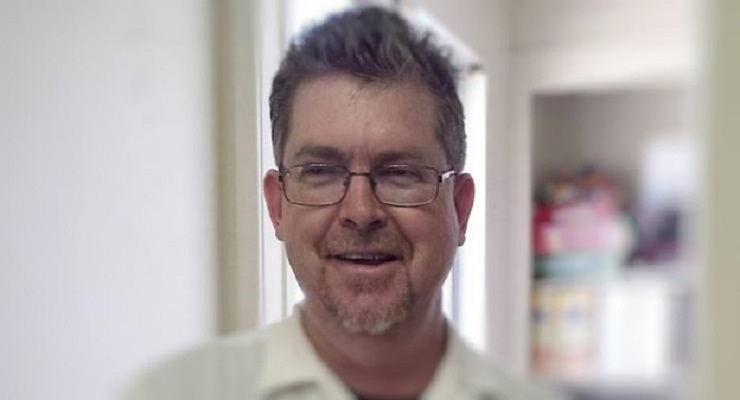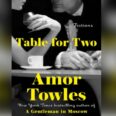
Every year for two decades on a Sunday afternoon in July, Terry Cannon, the founder and guiding spirit of the Baseball Reliquary, would kick off the organization’s annual gathering by raising an oversize cowbell and clanging it over his head. At least half of the two hundred people in the audience would join in with their own bells, disrupting the quiet outside the Pasadena Central Library auditorium. The annual cowbell ceremony was a tribute to Hilda Chester, the raspy-voiced Brooklyn Dodgers fan who clanged her own cowbell at Ebbets Field from the 1930s until 1957, when the Dodgers moved to Los Angeles.
After Cannon died two years ago (on August 1, 2020) at 66, it wasn’t clear if the Baseball Reliquary — which Jim Bouton, the pitcher who scandalized baseball with his 1970 book Ball Four, called “the people’s Hall of Fame” — would survive.
Cannon’s death, plus the COVID 19 pandemic, forced the cancellation of two annual gatherings as well as other events like the exhibits of its quirky baseball artifacts at Los Angeles area libraries. But the group has bounced back with the help of fan volunteers. This year’s ceremony will take place on Saturday, November 5 at 2 pm at the Los Angeles Central Public Library. Reflecting the Reliquary’s iconoclastic spirit, the new inductees into the Shrine of the Eternals will be Negro League founder Rube Foster, Max Patkin (often called the “Clown Prince of Baseball”) and broadcaster Bob Costas. The event will also honor Cannon, a librarian with the Pasadena public library system, who operated the Reliquary, without pay, on a shoestring budget raised from foundations, government arts agencies, and members’ $25 annual dues.
Cannon founded the Reliquary in 1996 to celebrate the sport’s rebels, mavericks, eccentrics, outcasts, and oddities. He loved the game, but not the business, of baseball and understood that there were many other fans like him around the country.
Since the Reliquary’s founding, 66 people have been installed into the Shrine of the Eternals. Unlike the Cooperstown sanctuary, the Shrine election process is democratic. Any Reliquary dues-paying member (there are about three hundred around the country, and another ten thousand fans on social media) can nominate and vote for the candidates. Each year, two or three people are inducted, most of whom travel to Pasadena to accept the award and give a speech about themselves and the game they love.
Not surprisingly, the first induction class included Curt Flood, the All-Star outfielder who sacrificed his career and paved the way for free agency by challenging baseball’s reserve clause before the Supreme Court. Flood died in 1997, but his widow, Judy Pace Flood, accepted the award on his behalf. The inaugural class also included Dock Ellis, an All-Star pitcher who spoke out about racial injustice but is perhaps best known for claiming to have pitched a no-hitter under the influence of LSD, and Bill Veeck, the maverick and radical owner of three major league teams. Cannon considered Veeck the Reliquary’s “spiritual guru.”
In 2003, the Reliquary inducted eighty-six-year-old Marvin Miller—the transformational leader of the players’ union—who at the time had been rejected by the corporate-dominated Hall of Fame several times. After getting a standing ovation, Miller reminded the crowd about baseball’s working conditions in the mid-1960s, when players first began talking about forming a union and asked Miller to join their movement. (Cooperstown finally elected him in 2019.)
Other inductees have included Bouton, Emmett Ashford (MLB’s first Black umpire), Pam Postema (the female minor league umpire thwarted in her quest to reach the big leagues), Billy Beane (the Oakland Athletics’ general manager whose pathbreaking use of statistics was made famous in the book and subsequent film Moneyball), Lester Rodney (sports editor of the Daily Worker, the Communist Party newspaper, who played a key role in exposing baseball’s racial hypocrisy and pushing for integration as early as the 1930s), Nancy Faust (the longtime Chicago White Sox organist famous for ad-libbing theme songs for her team’s players), Dr. Frank Jobe (who pioneered the Tommy John surgery), Ila Borders (the first woman to receive a college baseball scholarship, win a men’s college game, and win a men’s regular season professional game), Lisa Maria Fernandez (a four-time first-team college All American at UCLA and three-time Olympic medal–winning softball pitcher), Rachel Robinson ( Jackie Robinson’s widow and head of the Robinson Foundation), writers Arnold Hano and Roger Angell, and Sy Berger (designer of the first Topps’ baseball cards in 1952).
Steve Dalkowski, often considered the fastest pitcher in baseball history, was inducted in 2009. Dalkowski pitched in the Orioles’ farm system for nine erratic seasons (1957–65), typically leading the league in both strikeouts and walks. Wildness—of his fastball and his hard-drinking lifestyle—kept him out of the majors. After leaving baseball, he lost control of his life, scraped by as a migrant farmworker, was often homeless, and lost touch with his family. His sister, who found him and helped him get sober, accompanied him to the induction ceremony where, despite suffering from alcoholic dementia, the seventy-year-old Dalkowski signed autographs for the appreciative Reliquary audience.
Another inductee, Eddie “The King” Feigner, was perhaps the finest fast-pitch softball hurler ever—nearly ten thousand exhibition wins and 140,000 strikeouts while heading the King and His Court, a four-man squad. One-handed pitcher Jim Abbott and one-armed outfielder Pete Gray are part of the Reliquary’s Shrine of the Eternals. So are players Moe Berg, Glenn Burke (the first gay player to come out of the closet after his playing days ended), Jimmy Piersall, Luis Tiant, Bob Uecker, Mark Fidrych, Fernando Valenzuela, Bill “Spaceman” Lee, Bill Buckner, Jim “Mudcat” Grant, Manny Mota, Lefty O’Doul, Maury Wills, Tommy John, and Dick Allen.
Except O’Doul, Wills, John, and Allen, none of these figures may have the statistical credentials to get into Cooperstown, but each made a contribution to the sport that Reliquary members considered sufficiently unconventional or pathbreaking to be honored.
Another is Shoeless Joe Jackson, who was banned (many think unfairly) from baseball for life by Commissioner Kenesaw Landis for his association with the 1919 Black Sox scandal in which his teammates participated in a conspiracy to fix the World Series, despite his exceptional play, including setting a World Series record with twelve hits. Jackson’s outstanding career was abruptly halted in his prime, but his accomplishments were recalled at the 2002 Reliquary event.
The Reliquary inducted Cuban Minnie Minoso, one of the first Black Latinos in the major leagues, into the Shrine in 2002, 20 years before he finally got a plaque in Cooperstown this summer.
A handful of other Eternals—Veeck, Miller, Roberto Clemente, Jackie Robinson, Yogi Berra, Casey Stengel, Dizzy Dean, broadcaster Vin Scully, and Negro League luminaries Buck O’Neil, Satchel Paige, and Josh Gibson—have dual citizenship in the Reliquary and the Cooperstown Hall of Fame.
The opening cowbell rite of passage at each annual event will continue this year without Cannon. That will be followed by bestowing the Reliquary’s Hilda Award to a fan who, in the spirit of Hilda Chester, has demonstrated their dedication to the national pastime. In past years, these have included the author of the song “Meet the Mets,” a fan who has played his bass drum in the bleacher seats during every Cleveland Indians home game since 1973, a Detroit Tigers enthusiast who organized a volunteer group that restored a vacant ten-acre site where the team once played before it built a new stadium. They also include a Catholic nun who baked cookies for her beloved Cleveland Indians team, actor Bill Murray (part owner of four minor league teams), and a twenty-two-year-old college student who, beginning at the age of twelve, began writing letters to former Negro League players and then organized several Negro League reunions for athletes who hadn’t seen each other in decades.
Another winner was a retired college professor who had attended at least one regular-season game in all sixty-six stadiums used for major league play since 1950 and had been present for every three thousandth hit recorded in the major leagues since 1959—seventeen in all—as well as Hank Aaron’s record-breaking 715th home run and Pete Rose’s four thousandth career hit.
No Reliquary event would be complete without the crowd singing the national anthem. Over the years, the singing audience has been accompanied by a four-piece string band, a trombone ensemble, and musicians playing a saw, water-filled glasses, a tuba, a harp, a ukulele, and a pedal steel guitar, reflecting Cannon’s eclectic musical tastes and the members’ high tolerance for eccentricity.
Cannon graduated from San Francisco State University in 1974, worked as an editor for magazines about antique cars, experimental film, and avant-garde arts, and founded a local film festival before starting a new career as a librarian. He loved jazz almost as much as he loved baseball. Under Cannon’s guidance, in 2019 the Reliquary commissioned a jazz suite, “Stealin’ Home,” composed by Bobby Bradford to celebrate the life of Jackie Robinson, who grew up in Pasadena.
For years Cannon collected odd baseball artifacts to create a museum without walls—an iconoclastic alternative to the official Baseball Hall of Fame and Museum in Cooperstown. (A reliquary is a container for holy relics.) The quirky assortment of memorabilia include the hair curlers that Dock Ellis wore during batting practice in Pittsburgh, a jockstrap worn by three-foot seven-inch Eddie Gaedel (who had one at bat for the St. Louis Browns in 1951 in a stunt conceived by Veeck), a rubber model of pitcher Mordecai “Three Finger” Brown’s missing finger, several baseballs signed by Mother Teresa, a mid-nineteenth-century soil sample from Elysian Fields in Hoboken, N.J., where the first baseball game ever played between two organized teams took place in 1846, and a sacristy box that a priest used in 1948 to give the last rites to Babe Ruth (who died nearly a month later).
Cannon kept these and other artifacts at his home and in a storage unit, occasionally mounting exhibitions at Southern California libraries. Under Cannon’s guidance, the Reliquary worked with academic and amateur historians to retrieve and reveal little-known aspects of baseball’s past. Several exhibits were designed to preserve the history of amateur Latino and Japanese American baseball in Southern California.
“I was interested in things that other museums weren’t interested in collecting,” Cannon once explained. “Like, if they wanted bats and gloves, I wanted things to keep famous stories alive. It was more interesting to find a desiccated hot dog that Babe Ruth partially digested than a signed baseball or bat.”
“Baseball has so many wonderful relationships between the history of baseball and culture, politics and gender issues,” Cannon said. “I try to draw parallels between how you can view what was going on with baseball, and the society at large. A lot of people who come to see the exhibits are not even into baseball, but they liked how we point out its effects on society.”
Similar to Veeck, Cannon liked to poke fun at the baseball establishment and had a talent for bringing people together around his passion for the sport.
In 2015, Whittier College outside Los Angeles agreed to become the collection’s permanent home. After Cannon’s death, other volunteers, including Cannon’s wife Mary and Whittier professor Joe Price, assumed responsibility for keeping the Reliquary going. Anyone who wants to learn more about the Reliquary, or join it, can visit its website: https://baseballreliquary.org/
“Baseball is often called the game of statistics,” said Ron Shelton, a former minor league player who wrote and directed the film Bull Durham, “but the Reliquary is more about remembering the magic than the numbers. The Reliquary is the heart and soul of baseball.”
Peter Dreier is professor of politics at Occidental College and coauthor of “Baseball Rebels: The Players, People, and Social Movements That Shook Up the Game and Changed America” and “Major League Rebels: Baseball Battles Over Workers’ Rights and American Empire.”














 1 comment
1 comment


